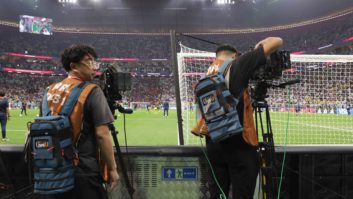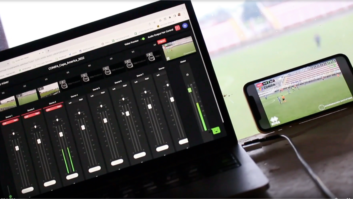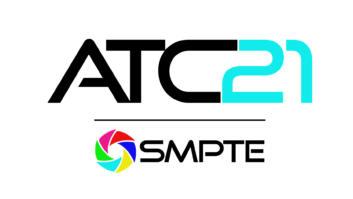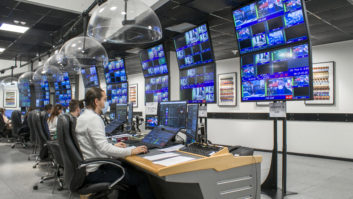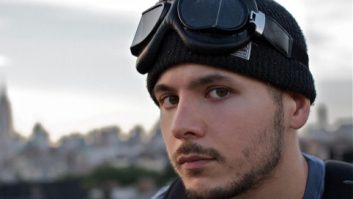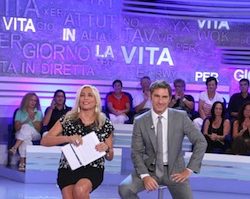Доброе Утро, or Good Morning, is the breakfast show from Channel One, the leading public broadcaster in the Russian Federation. It is transmitted each day from the channel’s headquarters at Ostakino in Moscow.
The challenge for the producers of the show is that Russia is such a vast country that it embraces many time zones: there is a ten-hour time difference between the far eastern and far western limits of the country. For a studio in Moscow, that means breakfast time starts the previous evening: the show starts at 05.00, but to be on the air at that time in Vladivostok means playing the opening titles at 20.00 the previous evening in the capital.
In fact, the programme is transmitted four times, with some time zones watching an hour earlier or an hour later. This gives the producers a chance to correct any errors and update content for the later retransmissions. So the challenge for the studio is more than simply a store and replay workflow.
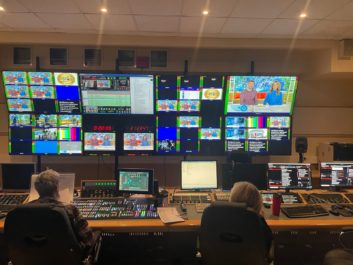 Channel One has been using Cinegy technology for more than 20 years. The first application was as an intelligent archive system, replacing a tape library. The benefits of Cinegy were well established, and across all departments Channel One now has 90 workspace licences, including automation access points as well as human operators.
Channel One has been using Cinegy technology for more than 20 years. The first application was as an intelligent archive system, replacing a tape library. The benefits of Cinegy were well established, and across all departments Channel One now has 90 workspace licences, including automation access points as well as human operators.
As is typical for live magazine programmes, Good Morning has a very fluid structure, and most days the live broadcast starts without a completed running order. The director and editor continue to make changes as the broadcast proceeds, and of course the retransmissions can reflect updates and corrections.
The production platform has to be extremely agile, which is why Channel One decided to move to an integrated environment based on Cinegy storage and processing. While the new system benefits from some of the integrated Cinegy tools – Cinegy Newsroom, for example, is widely used for fast editing – it was important to retain other established parts of the workflow like production switching, craft editing and so on.
In 2021 Cinegy and Channel One worked with local systems integrator DNK to completely refresh the solution, and implement the latest 64-bit tools. This brought other changes to the integration, which in turn had impacts on the users and the workflow, so this was a major project.
Adding to the challenge is that, for a show that broadcasts six days a week with a long time between the start of the day’s rehearsal and the end of the last transmission, the window in which a new system could be rolled out is very tight. In fact it was 29 hours, between the end of the fifth transmission at 10.00 on Saturday, and the start of preparations for Monday’s show, at 15.00 on Sunday.
As reassuring staff that the new technology and processes would slot in seamlessly, and to get familiar with the new user interfaces, DNK built a system on a test bench. This allowed staff to rehearse, as well as ensuring engineers were completely happy with the functionality and stability of the system.
In particular, there had been many changes in Cinegy Air to the latest version, and given that this controls the station output it was vital that everyone was completely comfortable. According to Roman Olegovich Begenev of the technical support department, “it’s good that everything works without problems because, to be honest, we have been setting up [Cinegy] Air and Capture ourselves for so long we have forgotten the nuances a little.”
Support for i-frame only codecs was important to Channel One, because it makes it easier to support attached edit workstations. Distribution and return feeds use the Cinegy Daniel codec, which delivers quality, low latency and convenience. Also valued is Cinegy’s backward compatibility: sources in regular use include cameras connected over Firewire.
To ensure high reliability, the installation duplicates the servers in two pairs. Either can be master or backup, and in practice they routinely switch between the two.
Ilyas Dzhafarovich Kuliyev, lead systems engineer of the technical support department, praised the system by saying that, while in the old days not a week went by when he did not get an emergency call, this does not happen with the new network. “This is what can be assessed as a qualitative change,” he said. “I’m forgetting what night phone calls are.”
Begenev added “The database transfer went without any problems at all. We jumped pretty significantly between versions, but it went without any pain for us. It was a challenge for DNK and for Cinegy, and they successfully coped with it.”
